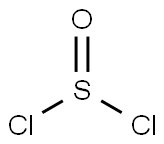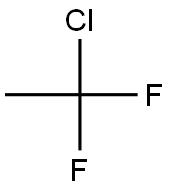1,2-Bis(2-chloroethoxy)ethane
Synonym(s):‘Triglycol dichloride’;Dichlorotriethylene dioxide;Tri(ethylene glycol) dichloride
- CAS NO.:112-26-5
- Empirical Formula: C6H12Cl2O2
- Molecular Weight: 187.06
- MDL number: MFCD00000976
- EINECS: 203-952-7
- SAFETY DATA SHEET (SDS)
- Update Date: 2024-12-18 14:08:57

What is 1,2-Bis(2-chloroethoxy)ethane?
Chemical properties
clear colorless to pale yellow liquid. Insoluble in water. Combustible.
The Uses of 1,2-Bis(2-chloroethoxy)ethane
1,2-Bis(2-chloroethoxy)ethane is used as pharmaceutical intermediate.
The Uses of 1,2-Bis(2-chloroethoxy)ethane
Solvent for hydrocarbons, oils, etc.; extractant; intermediate for resins and insecticides; organic synthesis.
The Uses of 1,2-Bis(2-chloroethoxy)ethane
1,2-bis(2-chloroethoxy)ethane was used in the synthesis of 1,1′-[1,2-ethanediylbis(oxy-1,2-ethanediyl)]bis[3-methyl-1H-imidazolium-1-yl] chloride.
Properties of 1,2-Bis(2-chloroethoxy)ethane
| Melting point: | -31°C |
| Boiling point: | 235 °C(lit.) |
| Density | 1.197 g/mL at 25 °C(lit.) |
| refractive index | n |
| Flash point: | 250 °F |
| storage temp. | Inert atmosphere,Room Temperature |
| solubility | insoluble |
| form | clear liquid |
| color | Colorless to Almost colorless |
| Water Solubility | insoluble |
| BRN | 506177 |
| CAS DataBase Reference | 112-26-5(CAS DataBase Reference) |
| NIST Chemistry Reference | Ethane, 1,2-bis(2-chloroethoxy)-(112-26-5) |
| EPA Substance Registry System | 1,2-Bis(2-chloroethoxy)ethane (112-26-5) |
Safety information for 1,2-Bis(2-chloroethoxy)ethane
| Signal word | Danger |
| Pictogram(s) |
 Corrosion Corrosives GHS05  Skull and Crossbones Acute Toxicity GHS06 |
| GHS Hazard Statements |
H301:Acute toxicity,oral H312:Acute toxicity,dermal H315:Skin corrosion/irritation H318:Serious eye damage/eye irritation H335:Specific target organ toxicity, single exposure;Respiratory tract irritation |
| Precautionary Statement Codes |
P261:Avoid breathing dust/fume/gas/mist/vapours/spray. P264:Wash hands thoroughly after handling. P264:Wash skin thouroughly after handling. P280:Wear protective gloves/protective clothing/eye protection/face protection. P301+P310:IF SWALLOWED: Immediately call a POISON CENTER or doctor/physician. P305+P351+P338:IF IN EYES: Rinse cautiously with water for several minutes. Remove contact lenses, if present and easy to do. Continuerinsing. |
Computed Descriptors for 1,2-Bis(2-chloroethoxy)ethane
1,2-Bis(2-chloroethoxy)ethane manufacturer
Lanya Chem Industries Pvt Ltd
1Y
Phone:+919996207397
Whatsapp: +91- 9996207397
product: 112-26-5 Triethyleneglycol dichloride 98%
New Products
Tert-butyl bis(2-chloroethyl)carbamate (S)-3-Aminobutanenitrile hydrochloride N-Boc-D-alaninol N-BOC-D/L-ALANINOL N-octanoyl benzotriazole 4-Hydrazinobenzoic acid 3,4-Dibenzyloxybenzaldehyde 1,1’-CARBONYLDIIMIDAZOLE R-2-BENZYLOXY PROPIONIC ACID 1,1’-CARBONYLDI (1,2-4 TRIAZOLE) 4-HYDROXY BENZYL ALCOHOL 3-NITRO-2-METHYL ANILINE (2-Hydroxyphenyl)acetonitrile 4-Bromopyrazole 5-BROMO-2CYANO PYRIDINE 5,6-Dimethoxyindanone 5-broMo-2-chloro-N-cyclopentylpyriMidin-4-aMine 4-methoxy-3,5-dinitropyridine 2-(Cyanocyclohexyl)acetic acid 2-aminopropyl benzoate hydrochloride 1-(4-(aminomethyl)benzyl)urea hydrochloride tert-butyl 4- (ureidomethyl)benzylcarbamate diethyl 2-(2-((tertbutoxycarbonyl)amino) ethyl)malonate Ethyl-2-chloro((4-methoxyphenyl)hydrazono)acetateRelated products of tetrahydrofuran








You may like
-
 112-26-5 1,2-Bis(2-chloroethoxy)ethane 99%View Details
112-26-5 1,2-Bis(2-chloroethoxy)ethane 99%View Details
112-26-5 -
 112-26-5 Triethyleneglycol dichloride 98%View Details
112-26-5 Triethyleneglycol dichloride 98%View Details
112-26-5 -
 112-26-5 99%View Details
112-26-5 99%View Details
112-26-5 -
 1,2-Bis(2-chloroethoxy)ethane, 97% CAS 112-26-5View Details
1,2-Bis(2-chloroethoxy)ethane, 97% CAS 112-26-5View Details
112-26-5 -
 1,2-Bis(2-chloroethoxy)ethane CAS 112-26-5View Details
1,2-Bis(2-chloroethoxy)ethane CAS 112-26-5View Details
112-26-5 -
 1,2-Bis(2-chloroethoxy)ethane CAS 112-26-5View Details
1,2-Bis(2-chloroethoxy)ethane CAS 112-26-5View Details
112-26-5 -
 N-Vinylformamide 99%View Details
N-Vinylformamide 99%View Details
13162-05-5 -
 2-ETHYLPYRIDINE 100-71-0 99%View Details
2-ETHYLPYRIDINE 100-71-0 99%View Details
100-71-0
Statement: All products displayed on this website are only used for non medical purposes such as industrial applications or scientific research, and cannot be used for clinical diagnosis or treatment of humans or animals. They are not medicinal or edible.